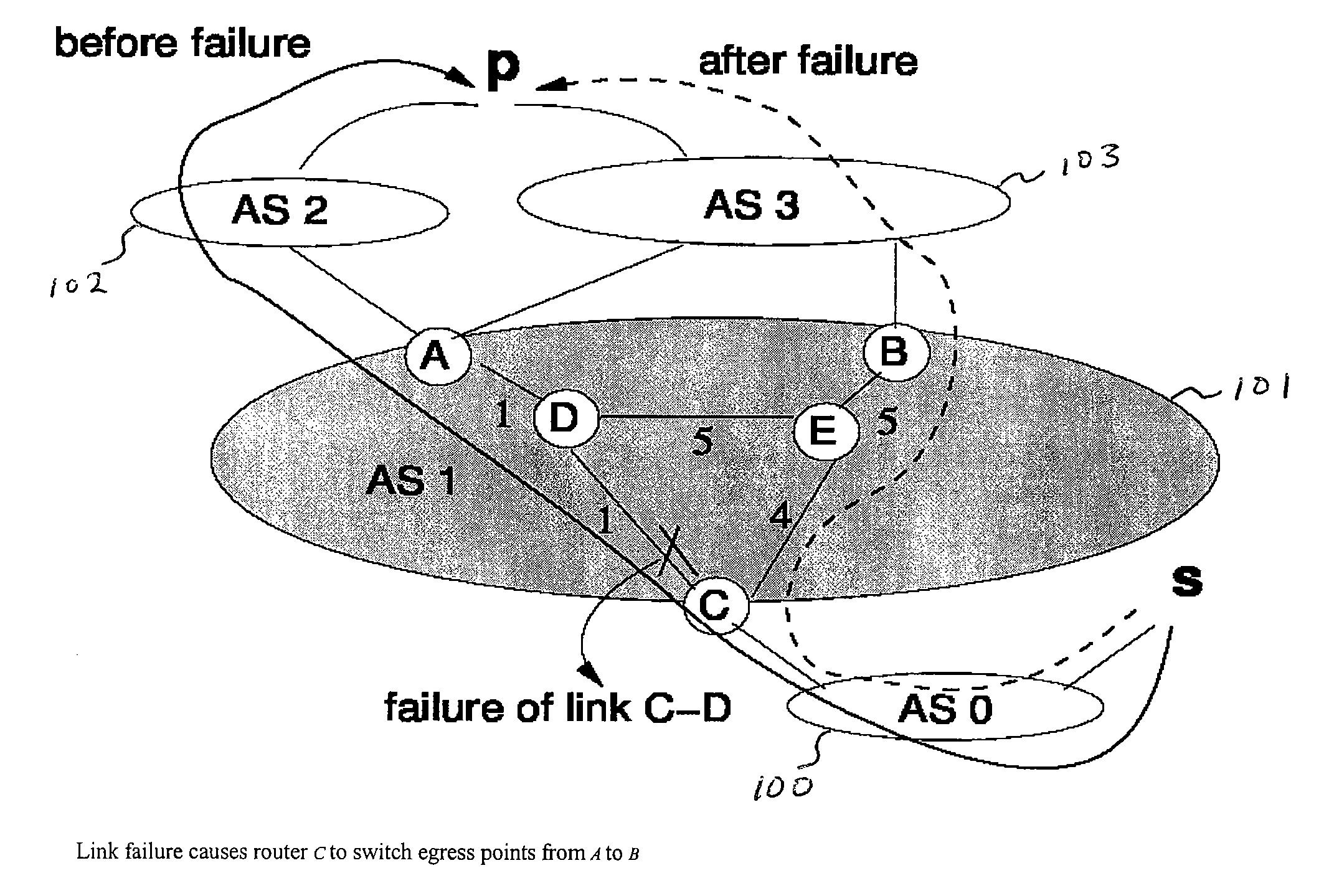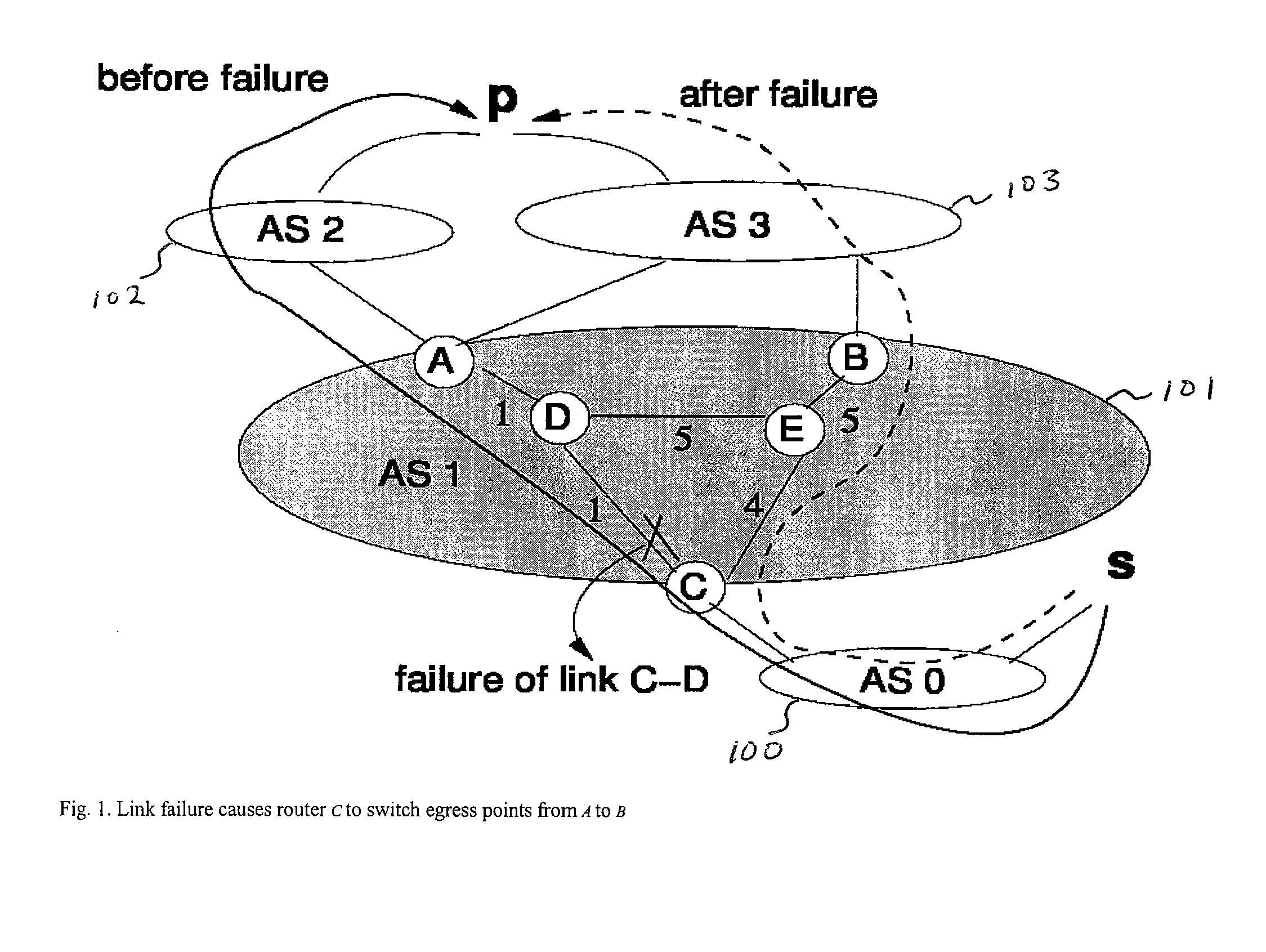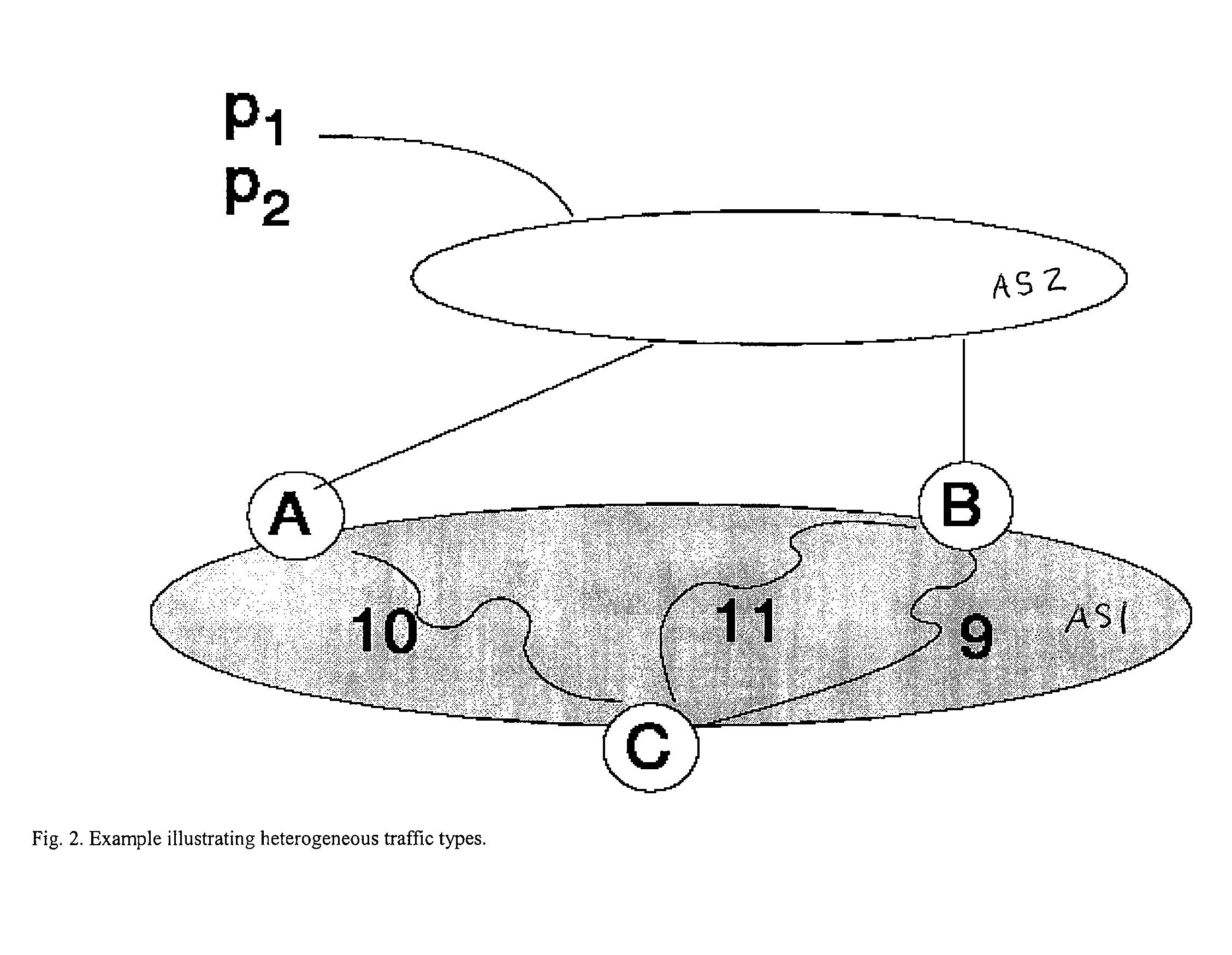Method for tunable inter domain egress selection
a technology of inter-domain egress and selection method, which is applied in the field of data transmission protocols, can solve the problems of limiting the consumption of bandwidth resources, affecting the performance of data transmission networks, and unclear roles of two protocols, so as to reduce the sensitivity to internal topology changes, the effect of easy execution for routers and easy resolution
- Summary
- Abstract
- Description
- Claims
- Application Information
AI Technical Summary
Benefits of technology
Problems solved by technology
Method used
Image
Examples
Embodiment Construction
[0034]According to the present invention, a tunable inter-domain egress (TIE) mechanism selects an egress point of a plurality of possible egress points for each ingress router and destination prefix in a network. Ideally, an optimization routine could compute the egress points directly based on the current topology, egress sets and traffic, subject to a network-wide performance objective. However, the routers must adapt in real time to events such as changes in the underlying topology and egress sets. The TIE mechanism allows a separation of timescales—enabling both rapid adaptation to unforeseen events and longer-term optimization of network-wide objectives than hot potato, fixed ranking or other routing schemes. In addition, the design of the TIE mechanism places an emphasis on generality to support a wide variety of network objectives, rather than tailoring to one particular scenario.
[0035]The TIE mechanism allows each router to have a ranking of the egress points for each desti...
PUM
 Login to View More
Login to View More Abstract
Description
Claims
Application Information
 Login to View More
Login to View More - R&D
- Intellectual Property
- Life Sciences
- Materials
- Tech Scout
- Unparalleled Data Quality
- Higher Quality Content
- 60% Fewer Hallucinations
Browse by: Latest US Patents, China's latest patents, Technical Efficacy Thesaurus, Application Domain, Technology Topic, Popular Technical Reports.
© 2025 PatSnap. All rights reserved.Legal|Privacy policy|Modern Slavery Act Transparency Statement|Sitemap|About US| Contact US: help@patsnap.com



